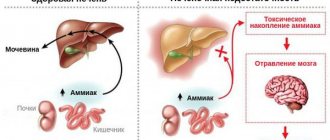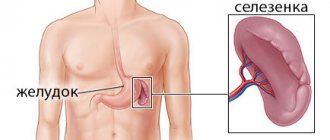In recent years, the topic of milk intolerance has been actively discussed in the media, on social networks, and on forums. “Milk is harmful”, “milk should be abandoned” - these and similar statements are often not supported by any convincing evidence.
“Harm” most often means the appearance of some unpleasant symptoms (nausea, bloating, diarrhea) after consuming milk and dairy products. Since such a situation is indeed possible, especially in adults, milk is automatically recognized as an undesirable food product in the eyes of the general public. How are things really going? Let's try to figure it out from the point of view of evidence-based medicine.
Lactose and lactase: what happens to them in the human body?
If we ignore the true allergy to milk protein (most often cow's), then the vast majority of cases of poor milk tolerance are due to the so-called lactase deficiency. What kind of disease is this? Let's start from the very beginning.
In addition to fats and proteins, the milk of mammals (including humans) contains carbohydrates, primarily the milk sugar lactose. Lactose consists of two molecules of simple sugars - glucose and galactose, connected by a special bond. In order for lactose to be absorbed by humans, this bond must be broken. Only then can the resulting simple sugars glucose and galactose be easily absorbed in the small intestine.
The process of bond cleavage inside the lactose molecule is possible only in the presence of a special enzyme - lactase. The names are similar: the enzyme lactase breaks down the milk sugar lactose. This enzyme is located on the surface of the villi of the small intestine.
In humans and most mammals, the activity of the lactase enzyme is maximum after birth, this allows the absorption of large amounts of milk, which in the first months is the only source of food for the newborn. After stopping breastfeeding, lactase activity gradually fades as a person switches to an adult type of diet, where milk and dairy products are only a small part of the diet.
In some people, the decrease in the activity of this enzyme occurs very quickly, in others it is gradual, and a certain part of people maintain high lactase activity for a long time. What does this depend on?
It is known that the ability of lactase to break down the milk sugar lactose is regulated by a special gene. More precisely, two genes. One gene (LCT) encodes the enzyme lactase; without it, it simply could not be produced. The second gene located nearby is called MCM6, and its task is to regulate the activity of the LCT gene.
For example, it is known that the variant (genotype) of the MCM6 gene, designated C/C, is associated with low activity of the LCT gene, which leads to early lactose intolerance. With the T/T genotype, the activity of the LCT gene is high, even in adulthood. The C/T genotype is the most common variant and is most likely to develop lactose intolerance in middle age.
This information is very important because it is now possible to evaluate the MSM6 gene in laboratories.
So, the activity of the lactase enzyme is regulated by the gene; with age, the likelihood of a decrease in this activity increases. What happens to the milk sugar lactose if there is not enough enzyme to break it down in the small intestine? Some of the lactose will still be broken down and absorbed in the small intestine. The remaining undigested lactose molecules will move further through the small intestine and eventually reach the large intestine. During this process, due to high osmotic activity, lactose attracts water molecules, increasing the amount of fluid in the intestinal lumen, which increases the risk of developing diarrhea. Milk sugar that enters the colon is an excellent nutrient substrate for local bacteria, which actively begin to break it down, producing gases. Increased gas formation and bloating are common symptoms in such patients. In addition, people with impaired breakdown and absorption of lactose may experience mild abdominal pain, nausea and other unpleasant symptoms.
To summarize the above: low activity of the lactase enzyme leads to impaired absorption of lactose in the small intestine. lactase deficiency in medicine . Lactase deficiency, which occurs over time in adults, also has a second name - adult hypolactasia. This article will focus on this most common type of lactase deficiency. We will leave aside congenital lactase deficiency (an extremely rare disease of newborns) and secondary lactase deficiency (occurs as a consequence of a number of gastroenterological, infectious and other diseases).
Diet of a nursing mother
A mother's diet for lactose intolerance in infants involves limiting or completely abstaining from drinking whole milk. In this case, the daily diet should contain a fermented milk product, hard cheese or butter, since they serve as a source of calcium and vitamins. A woman should exclude cow's milk from her diet, since the protein it contains can be irritating to the child's body. If after this correction the child no longer shows signs of intestinal irritation, it means that the condition was not caused by lactase deficiency, but by an allergy to protein.
A woman who is lactating must exclude foods and dishes containing sugar from the menu. Optimal nutrition - vegetables, rice, eggs, nuts, corn, lean meats and fish.
Prevalence of lactase deficiency
Modern research demonstrates the high prevalence of lactase deficiency in adults around the world - on average, 70% of the population has difficulty digesting lactose. The remaining 30%, however, retain the ability to break down lactose at a high level and do not experience any unpleasant symptoms. There is a cultural and historical hypothesis for the formation of such stability. According to this hypothesis, approximately 10 thousand years ago, a gene mutation (yes, that same MCM6 gene) arose and took hold in the population of Northern Europe, allowing people to tolerate milk well even in adulthood. It was during this period that livestock farming began to actively develop, and dairy products began to be widely used in the human diet. Those who had the “right” mutation had better nutrition, which means they had a better chance of surviving in harsh conditions.
Research suggests that cultures that have historically relied on livestock and dairy products are more likely to demonstrate good lactose tolerance than populations with low dairy consumption. For example, in Southeast Asia, >90% of individuals have lactase enzyme deficiency in adulthood. In Scandinavian countries, on the other hand, the prevalence of lactase deficiency is approximately 10%.
In the Russian Federation, the prevalence of lactase deficiency is approximately 60%.
How to replace products with lactose?
Lactose is found in all dairy products, plus some confectionery products, instant foods, meat, tablets, and dietary supplements. Pay attention to the ingredients.
For people intolerant, lactose-free or plant-based milk is suitable. Or fermented milk products, in which lactose has already been broken down by lactic acid bacteria, so kefir, yogurt, fermented baked milk, as well as butter and cheese do not give an uncomfortable effect.
Lactase enzyme is sold in tablets or capsules. You can drink it before drinking milk. This method should not be used without consulting a doctor.
Diagnosis of lactase deficiency
The presence of typical symptoms of lactase deficiency: loose stools, bloating, increased gas formation, nausea after drinking milk and dairy products often allows one to suspect this diagnosis even before consulting a doctor or, at least, before performing any tests.
Yes, sometimes a patient, turning to a gastroenterologist, says: “if I drink a glass of cow’s milk, then I will definitely have diarrhea after some time. If I don’t drink milk, everything is always fine.” A typical picture of lactase deficiency usually does not require additional research. In practice, most cases of lactose intolerance are blurred, masquerading as other problems and diseases. Bloating without stool disturbances or mushy stools some time after eating – but who knows what this could be connected with? And if a person consumes milk or dairy products daily, it is usually not possible to establish or exclude a diagnosis of lactase deficiency based on symptoms alone.
How can lactase deficiency be established in this case?
Option one: elimination diet.
By eliminating all milk products from the diet (precisely milk, and not those that “contain powdered milk”) for a certain period, you can see a complete or almost complete disappearance of symptoms. Most likely, it was the milk sugar in the products that caused their appearance. This hypothesis can be tested by gradually introducing dairy products or milk into the diet.
Option two: hydrogen breath test with lactose.
The test is based on determining the hydrogen concentration in exhaled air. Hydrogen is a gas that is released when some carbohydrates are broken down by bacteria in the colon. To do this, carbohydrates need to get into the large intestine, where they are processed to form gas. As a result, the released hydrogen is quickly absorbed through the intestinal wall into the bloodstream and delivered to the lungs.
The carbohydrate chosen for the test is the same milk sugar, lactose, which is found in animal milk and dairy products. It is this carbohydrate that is poorly broken down by insufficient activity of the lactase enzyme, resulting in a sufficiently large amount of lactose reaching the colon in patients with lactase deficiency.
Based on measurements of the hydrogen concentration in exhaled air before the test (on an empty stomach) and at certain intervals after consuming lactose, a diagnosis of lactase deficiency is made or excluded.
Option three: lactose tolerance test with blood glucose determination.
The test is based on the knowledge that lactose is a carbohydrate consisting of two simple carbohydrates, one of which is glucose. If a person does not have lactase deficiency, then the activity of the lactase enzyme is preserved, that is, the processes of lactose breakdown in the small intestine are preserved. The glucose molecules released during the breakdown are quickly absorbed and enter the bloodstream. An increase in blood glucose levels after consuming milk sugar can be determined in the laboratory. The disadvantage is the invasiveness of the procedure, i.e. the need to take blood samples several times during the test.
Option four: lactase enzyme activity in small intestinal biopsy.
As we said above, the lactase enzyme is located on the surface of the villi of the small intestine. There are special laboratory kits that allow you to determine lactase activity in real time. To do this, a biopsy sample (a piece of tissue) is taken from the duodenum during gastroscopy. Low enzyme activity may indicate that the patient has lactase deficiency. A relative disadvantage of the method is its invasiveness (the need to perform gastroscopy).
Option five: study of MSM6 gene variants.
This method is now widely used by doctors and offered by laboratories for diagnosing lactase deficiency. However, if you take a critical look at the genetic study, you can understand that even the determination of one or another genotype (C/T or C/C) does not mean that the patient has lactase deficiency. We can only talk about the possible risk of its early development with the C/C genotype or the low probability of lactase deficiency with the T/T genotype.
Symptoms of lactose intolerance in adults
If there is not enough lactase in the small intestine, then lactose is sent to the body in broken down form. As a result, within 20-30 minutes after consuming dairy products a person may have:
- bloating,
- diarrhea,
- pain in the intestines,
- nausea,
- rumbling,
- weakness,
- dizziness.
This is how lactose intolerance manifests itself in adults. This disease is also called “lactase deficiency” (LD).
Treatment of lactase deficiency
Since the cause of symptoms of lactase deficiency is insufficient breakdown of milk sugar (and only that!), solutions to this problem can be as follows:
- completely eliminate products containing lactose from the diet;
- sharply reduce the amount of lactose consumed in food.
Today, there is evidence of the positive effects of milk and dairy products on human health. Thus, regular sufficient consumption of milk/dairy products reduces the risk of developing colon cancer, type 2 diabetes, cardiovascular diseases, including stroke. This food group is an important source of calcium, which is especially valuable for people with osteoporosis. In this regard, a complete exclusion of milk and dairy products by patients with lactase deficiency is undesirable.
An alternative may be to select dairy products that contain little lactose per serving. It is known that even individuals with diagnosed lactase deficiency, including those with the C/C genotype, are able to break down small amounts of milk sugar. Their symptoms occur when the amount of lactose that enters the small intestine with food exceeds the capacity of the enzyme system.
In this regard, it is very important to have an idea of how much lactose is contained in different dairy products. We tried to provide data on some products in the table:
| Product name | Product portion | Lactose content (g) |
| Whole cow's milk | 100 ml | 4,5 |
| Cow's milk 3.2% | 100 ml | 4,7 |
| Skimmed cow's milk | 100 ml | 4,6 |
| Goat milk | 100 ml | 4,2 |
| Buffalo milk | 100 ml | 4,9 |
| Sheep milk | 100 ml | 4,4-4,8 |
| Human milk* | 100 ml | 7,0 |
| Lactose-free milk | 100 ml | 0,5 |
| Acidophylline | 100 ml | 4,6 |
| Condensed milk | 100 ml | 12,9-20,8 |
| Buttermilk | 100 ml | 3,7-5 |
| Yogurt | 100 ml | 3,2 |
| Butter | 100 g | 4,0 |
| Cottage cheese | 100 g | 2,6 |
| Mozzarella cheese | 100 g | 1,5-2,0 |
| Sheep cheese | 100 g | 1,5-2,0 |
| Ricotta cheese | 100 g | 4,0 |
| Parmesan cheese | 100 g | 0-0,9 |
| Cream cheese | 100 g | 6,0 |
| Cream | 15 ml | 0,5 |
| Ice cream | 15 g | 2,0-6,0 |
*Provided for comparison
As we can see from the table, the lowest lactose content is in hard cheeses, portioned cream, butter and, of course, in lactose-free milk. Research shows that individuals with lactase intolerance generally tolerate up to 12 g of lactose per meal. In practice, this amount can be even smaller and individual for each person.
There are also substitutes for animal milk, usually of plant origin. For example, rice milk, soy milk, coconut milk, almond milk, hazelnut milk, macadamia nut milk, etc. These products do not contain lactose, despite the word "milk" in the name.
Additionally, some probiotics, as well as dietary supplements containing the lactase enzyme, can help solve the problem of lactase deficiency.
Where to take a medical test in Moscow?
Laboratory of NACFF
Moscow, st. Ugreshskaya, 2, building 8. +7 The carbohydrate content in feces is determined. How to get there: https://www.clinicalresearchorganization.ru/ru/kontakti
Multidisciplinary diagnostic and treatment clinic "Capital Doctor"
Moscow, st. Butyrskaya, 53/3. +7 +7. The carbohydrate content in stool is determined and stool is analyzed for dysbacteriosis. How to get there: https://sdoctor.ru/contact/
Independent laboratory INVITRO
Moscow, Gazetny lane, 1/12. +7 The carbohydrate content in feces is determined, information is read using the DNA formula after a blood test. How to get there: https://tinyurl.com/36pzv5j
Clinic "Intermedcenter"
Moscow, Grokholsky per., 31 +7 The carbohydrate content in feces is determined, information is read using the DNA formula after a blood test. How to get there: https://www.intac.ru/pages/nashi-kontakty.html
Laboratory "Nearmedic"
+7 (495) 6-171-171 The carbohydrate content in feces is determined, information is read using the DNA formula after a blood test. How to get there: https://www.nrlab.ru/contacts/
Moscow Research Institute of Epidemiology and Microbiology named after. G. N. Gabrichevsky
Moscow, st. Admirala Makarov, 10 +7 The carbohydrate content in feces is determined. How to get there: https://www.gabrich.ru/contacts.html
Hospital No. 13 Children's City Clinical Hospital named after. N. F. Filatova
Moscow, st. Sadovaya-Kudrinskaya, 15 Information telephone The carbohydrate content in feces is determined. How to get there: https://tinyurl.com/38ce4zg








